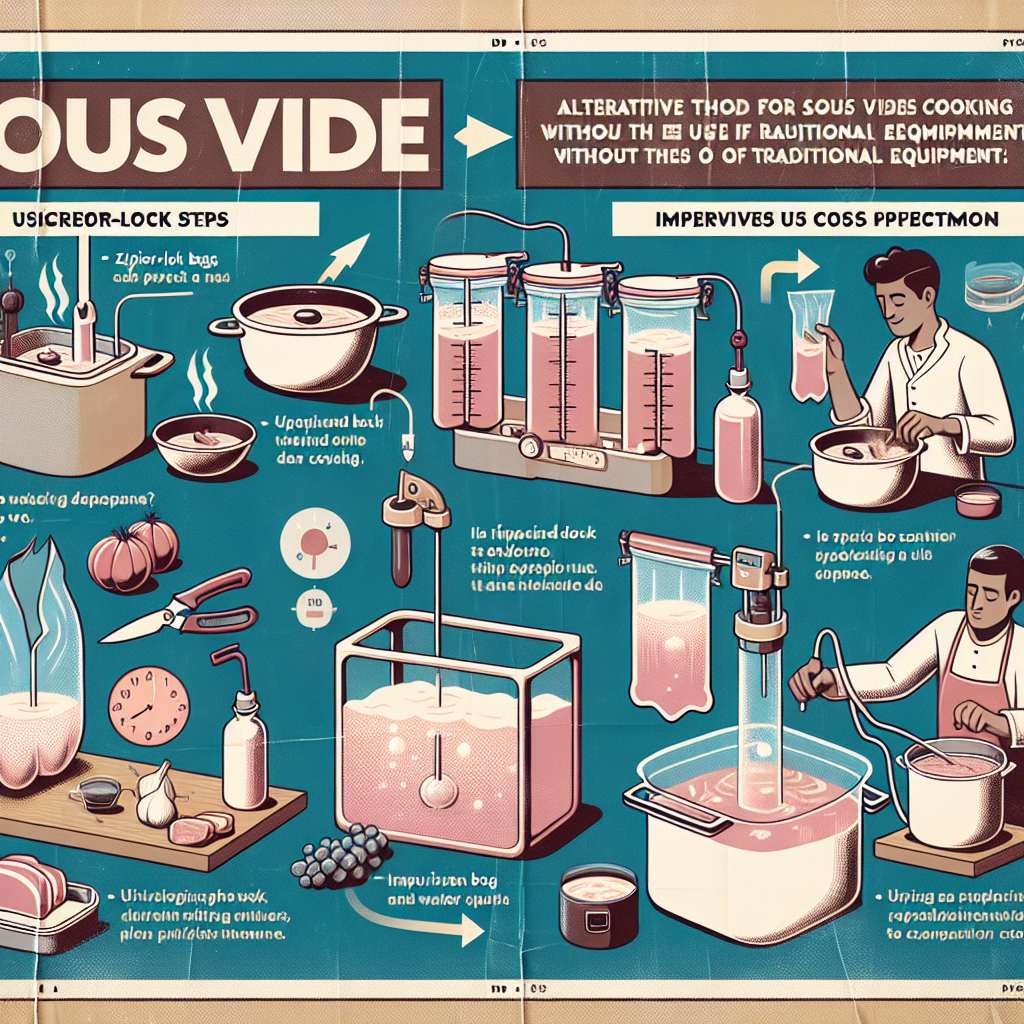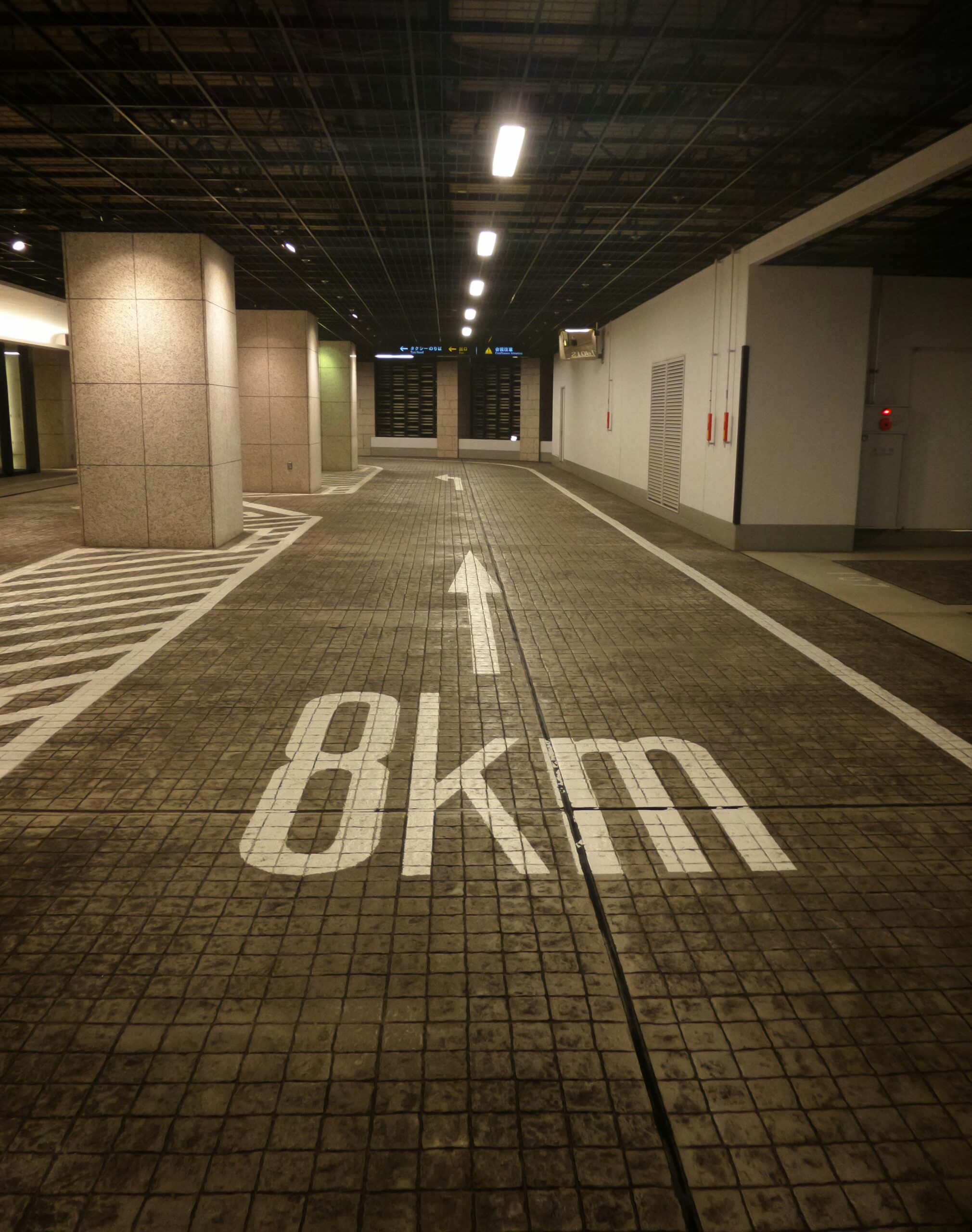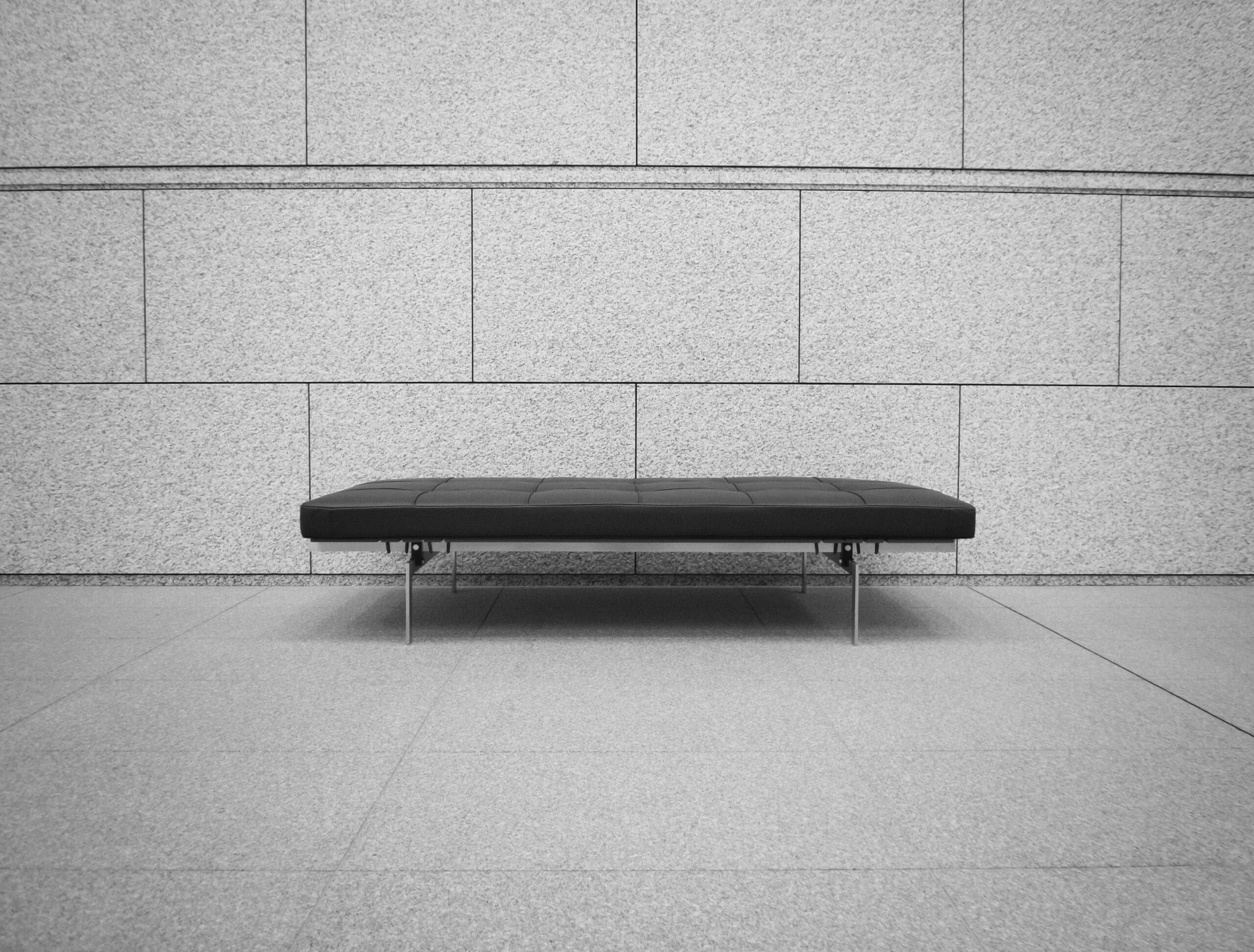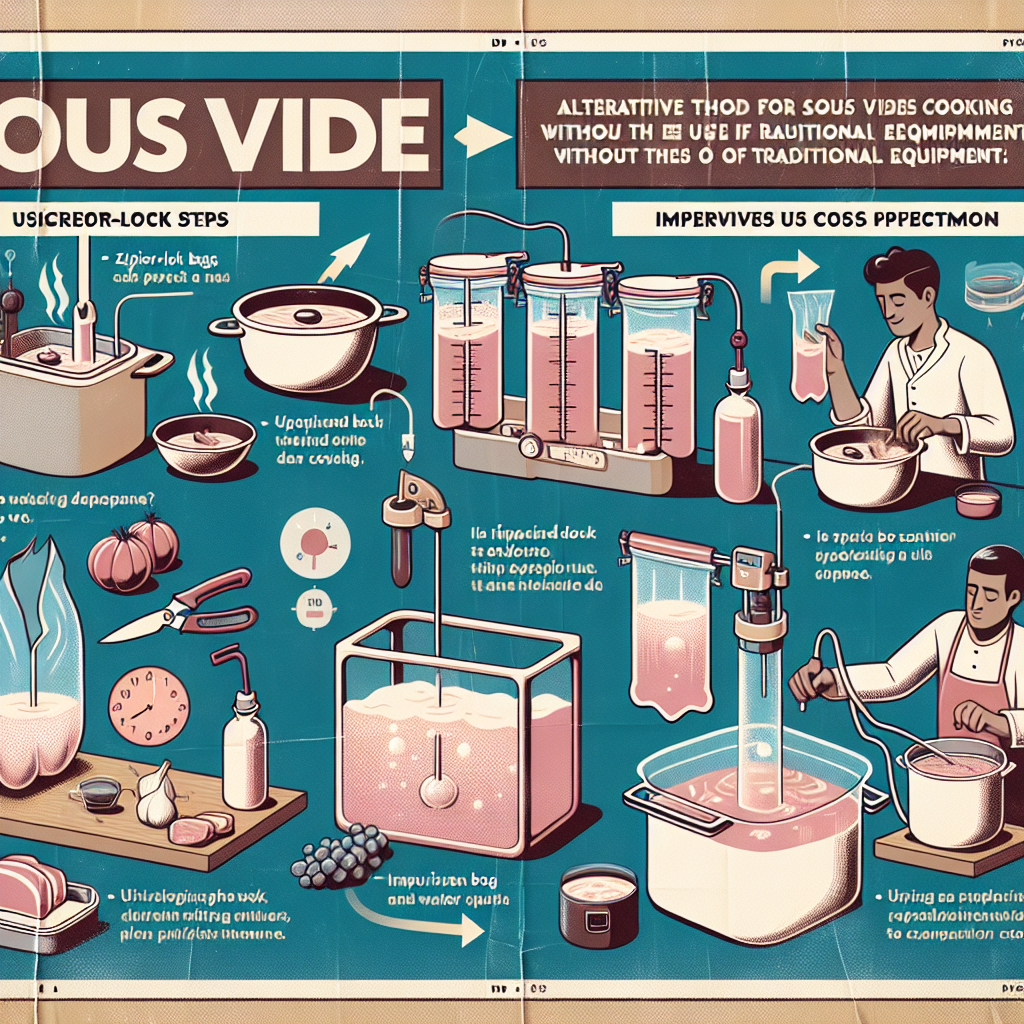
Have you ever wondered if you can enjoy the wonders of sous vide cooking without the need for expensive equipment like a vacuum sealer or immersion circulator? Well, you’re in luck! In this article, we will explore alternative methods that allow you to achieve similar results without breaking the bank. From using resealable bags to simple hacks, we’ll show you that you don’t need fancy gadgets to cook a delicious sous vide meal right in the comfort of your own kitchen. So, let’s get cooking!
Overview of sous vide cooking
What is sous vide cooking?
Sous vide cooking is a method of cooking that involves sealing food in a vacuum-sealed bag and cooking it in a water bath at a precise, controlled temperature. This technique allows for even cooking and ensures that the food retains its moisture and flavor.
Why is sous vide cooking popular?
Sous vide cooking has gained popularity in recent years due to its ability to produce restaurant-quality results in the comfort of your own kitchen. The precise temperature control allows for consistent and perfectly cooked food every time. Additionally, sous vide cooking is a convenient method for meal prep, as it allows you to cook large batches of food and easily store them for later use.
Traditional sous vide equipment
Vacuum sealer
A vacuum sealer is a key piece of equipment for traditional sous vide cooking. It removes the air from the bag, creating an airtight seal that helps maintain the texture and flavor of the food. However, if you don’t have a vacuum sealer, don’t worry! There are alternative methods that can be used.
Immersion circulator
An immersion circulator is another essential tool for sous vide cooking. It keeps the water in the pot at a constant temperature, ensuring even cooking throughout. If you don’t have an immersion circulator, there are alternative methods that can still achieve excellent results.
Water bath or pot
A water bath or pot is necessary for sous vide cooking as it acts as the vessel to hold the water and food. The size of the water bath or pot will depend on the quantity of food you are cooking. Make sure to choose a pot or container that is large enough to fully submerge the food.
Sous vide bags
Sous vide bags are specially designed to withstand high temperatures and create an airtight seal. These bags are essential for traditional sous vide cooking as they prevent water from entering the bag. However, if you don’t have sous vide bags, there are alternative options available.

Sous vide without a vacuum sealer
Using ziplock bags
If you don’t have a vacuum sealer, you can use ziplock bags for sous vide cooking. Simply place the food in a ziplock bag, ensuring that it is fully sealed. To remove the air from the bag, partially seal the bag, leaving a small opening. Then, submerge the bag into the water bath, allowing the water to push out the remaining air. Once the air is removed, fully seal the bag.
Using displacement method
Another alternative to a vacuum sealer is the displacement method. This method involves placing the food in a bag and slowly submerging it into the water bath, allowing the water to push out the air. Once the air is displaced, seal the bag securely. This method is effective in removing most of the air from the bag, resulting in a similar cooking outcome.
Sous vide without an immersion circulator
Stovetop method
If you don’t have an immersion circulator, you can still achieve sous vide cooking using the stovetop method. Fill a large pot with water and heat it on the stovetop. Use a kitchen thermometer to monitor and adjust the temperature as needed. Place the sealed sous vide bags in the pot, ensuring that they are fully submerged. It is important to monitor the temperature throughout the cooking process to maintain the desired level of heat.
Oven method
The oven method is another option for sous vide cooking without an immersion circulator. Preheat your oven to the desired temperature and place the sealed sous vide bags in a roasting pan or oven-safe dish. Fill the pan or dish with water so that it surrounds the bags. Use a kitchen thermometer to monitor the water temperature, adjusting the oven temperature as necessary to maintain a constant heat.
Cooler method
For longer cooking times, such as when preparing large cuts of meat, the cooler method can be used. Fill a cooler with water at the desired temperature and place the sealed food bags in the water. The insulating properties of the cooler will help maintain the temperature over an extended period. To prevent heat loss, cover the cooler with a lid or towel.

Choosing appropriate cookware
Selecting a suitable pot or container
When choosing a pot or container for sous vide cooking, it is important to select one that can withstand high temperatures and is deep enough to fully submerge the food. Stainless steel pots and containers are recommended for their durability and heat conductivity. Additionally, ensure that the pot or container has a tight-fitting lid to minimize heat loss during the cooking process.
Ensuring even heat distribution
To ensure even cooking during sous vide, it is important to use cookware that provides consistent heat distribution. Avoid using thin or lightweight pots, as they may result in uneven temperatures. Opt for pots or containers with thick bottoms that distribute heat evenly, allowing the food to cook uniformly.
Understanding temperature control
Using a thermometer
Temperature control is crucial in sous vide cooking to achieve the desired level of doneness. To ensure accuracy, use a reliable kitchen thermometer to measure the water temperature. Place the thermometer in various areas of the water bath to check for any temperature variations.
Maintaining constant temperature
Maintaining a constant temperature is essential for sous vide cooking. To achieve this, monitor the water temperature throughout the cooking process and make adjustments as needed. Insulating the pot or container by covering it with a towel or lid can reduce heat loss and help maintain a constant temperature.
Ensuring food safety
Importance of pasteurization
One of the major benefits of sous vide cooking is its ability to pasteurize food, eliminating harmful bacteria while retaining the food’s texture and flavor. Pasteurization occurs when food is cooked at a specific temperature for a certain period. It is important to follow recommended cooking times and temperatures to ensure that the food is safe to consume.
Safe cooking temperatures
To ensure food safety, it is essential to cook food to the appropriate temperatures. Different types of food require different internal temperatures to eliminate harmful bacteria. For example, chicken should be cooked to an internal temperature of 165°F (74°C), while beef can be cooked to a lower internal temperature depending on the desired level of doneness.
Preventing bacterial growth
To prevent bacterial growth, it is important to handle and store food properly before and after sous vide cooking. Thoroughly clean and sanitize all equipment, including pots, containers, and utensils. Additionally, avoid cross-contamination by storing raw and cooked foods separately. If storing cooked food, promptly chill it in an ice bath and transfer it to the refrigerator or freezer.
Recipes for sous vide without traditional equipment
Chicken breast
To cook chicken breast without a vacuum sealer or immersion circulator, place the seasoned chicken breast in a ziplock bag and remove as much air as possible using the displacement method. Heat a pot of water on the stovetop to the desired temperature and place the sealed bag in the water. Cook for the recommended time, ensuring the water temperature remains constant. Once cooked, remove the bag from the water bath, pat the chicken dry, and sear it in a hot skillet for a crispy exterior.
Steak
For sous vide steak without traditional equipment, season the steak and place it in a ziplock bag, removing as much air as possible. Use the displacement method to remove remaining air and seal the bag. Heat a pot of water on the stovetop or use the oven method to maintain a consistent temperature. Submerge the bag in the water bath and cook for the recommended time. After cooking, remove the steak from the bag and sear it in a hot skillet or on a grill to develop a flavorful crust.
Salmon
To sous vide salmon without a vacuum sealer or immersion circulator, season the salmon fillet and place it in a ziplock bag, removing as much air as possible using the displacement method. Heat a pot of water on the stovetop or use the oven method to achieve the desired temperature. Submerge the bag in the water bath and cook for the recommended time. Once cooked, remove the salmon from the bag and gently pat it dry. Finish by searing the salmon skin-side down in a hot skillet to achieve a crispy skin.
Vegetables
For sous vide vegetables without traditional equipment, season the vegetables and place them in a ziplock bag, removing as much air as possible using the displacement method. Heat a pot of water on the stovetop or use the oven method to maintain the desired temperature. Submerge the bag in the water bath and cook for the recommended time. Once cooked, remove the vegetables from the bag and season them further if desired. Sauté in a hot skillet or roast in the oven for added texture and flavor.

Tips and tricks
Sous vide cooking times and temperatures
Experimenting with different cooking times and temperatures is key to finding your preferred level of doneness. Sous vide cooking times can vary depending on the thickness and type of food. Additionally, understanding the safe internal temperatures for different types of food is crucial in ensuring food safety.
Seasoning and flavoring options
While sous vide cooking helps retain the natural flavors of food, you can enhance the taste by seasoning and flavoring the food before cooking. Marinades, herbs, spices, and aromatics can all be added to the sous vide bag to infuse the food with additional flavor. Alternatively, you can season or glaze the food after cooking and finish it with a quick sear or grill for added texture and taste.
Resting and finishing techniques
Once the food is cooked sous vide, it is important to allow it to rest before serving. This allows the juices to redistribute, resulting in a more tender and flavorful final product. Additionally, finishing techniques such as searing, grilling, or torching can be applied to achieve a delicious crust or caramelization on the food’s exterior.
Using sous vide for meal prep
Sous vide cooking is a convenient method for meal prepping. You can cook large batches of food and portion them into individual servings. After cooking, rapidly chill the sealed bags in an ice bath before transferring them to the refrigerator or freezer. This allows you to have ready-made, perfectly cooked meals that can be reheated quickly with minimal effort.
Conclusion
Sous vide cooking can be accessible and achievable even without traditional equipment such as a vacuum sealer or immersion circulator. By using alternative methods and existing kitchen tools, you can still experience the benefits of this cooking technique. From cooking tender chicken breast to perfectly cooked salmon, sous vide opens up a world of culinary possibilities in your own kitchen. So don’t be afraid to get creative and explore the delicious wonders of sous vide cooking!
Can I Sous Vide Without A Vacuum Sealer Or Immersion Circulator?

